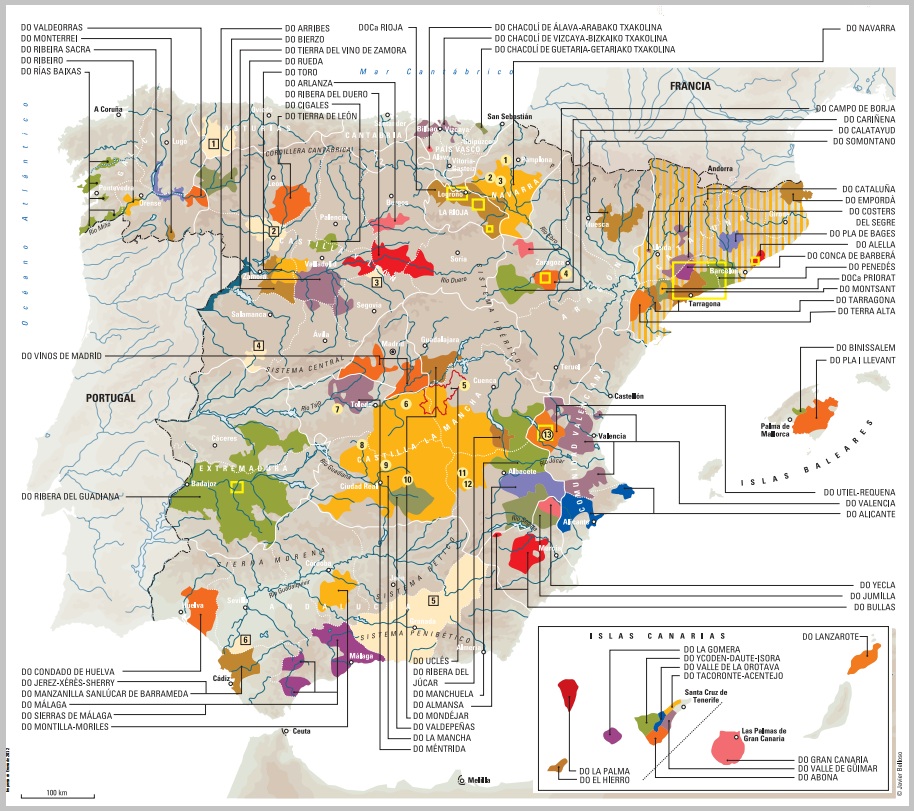To truly immerse yourself in the Spanish language, it is useful to have some knowledge of Spanish wines. Spain is the most widely planted wine producing country in the world. Remains from production of this old and legendary drink are preserved from Neolithic times in Spain. Wine production or viniculture here is both culturally and economically very important.
The wine production area of Spain covers some 11,750 square kilometres, that of France covers 8,640 square kilometres. Italy is in third place with 8,270 square kilometres of planted vines, followed by Turkey with 8,120 square kilometres and the United States of America with 4,120 square kilometres. Data sourced from the FAO ( United Nations Food and Agriculture Organization).
Spain´s wine producing regions are determined and limited according to the regulatory classification system of Denominaciones de Origen. The most internationally well known Spanish red wines are Rioja and Ribera del Duero; Rueda and Rias Baixas of the whites, and Jerez of the fortified wines. Jerez has an area limited to wine production and another area limited to ageing and maturing. They are known as fortified wines because a distilled beverage, usually brandy, is added to increase alcohol content. Best known internationally of the sparkling wines or Cavas is Penedes.
Grape varieties, both white and red, are classified according to where they are cultivated, be that internationally or those native to Spain. The best known being:
Spanish Red Grape Varieties: Garnacha, the most widely planted grape in Spain. Tempranillo, probably the most important grape in the whole of Spain, is also grown in Argentina, USA, France and Portugal. In the area between Valladolid and Soria, this grape variety is also known as Tinta del Pais and in La Mancha as Cencibel.
International Red Grape Varieties: Cabernet Sauvignon, Merlot and Shiraz.
Spanish White Grape Varieties: Albarino (from Galicia used in the production of the famous Rias Baixas wines);Verdejo (from the Rueda wine region); Macabeo from northern Spain together with Parellada and Xarel-lo form the base for the production of sparkling Spanish wines or Cavas; and Palomino is used in the Jerez fortified wines.
International White Grape Varieties: Chardonnay, used in sparkling wine prduction; Sauvignon Blanc.
Our recommendation to students who come to Spain to immerse themselves in learning the language, is to take some time to enjoy some of the many wine routes which Spain has to offer. It is a valuable opportunity to experience how Spain has contributed to wine production and to enjoy some leisurely wine tasting along the route.
Tags: La Rioja















